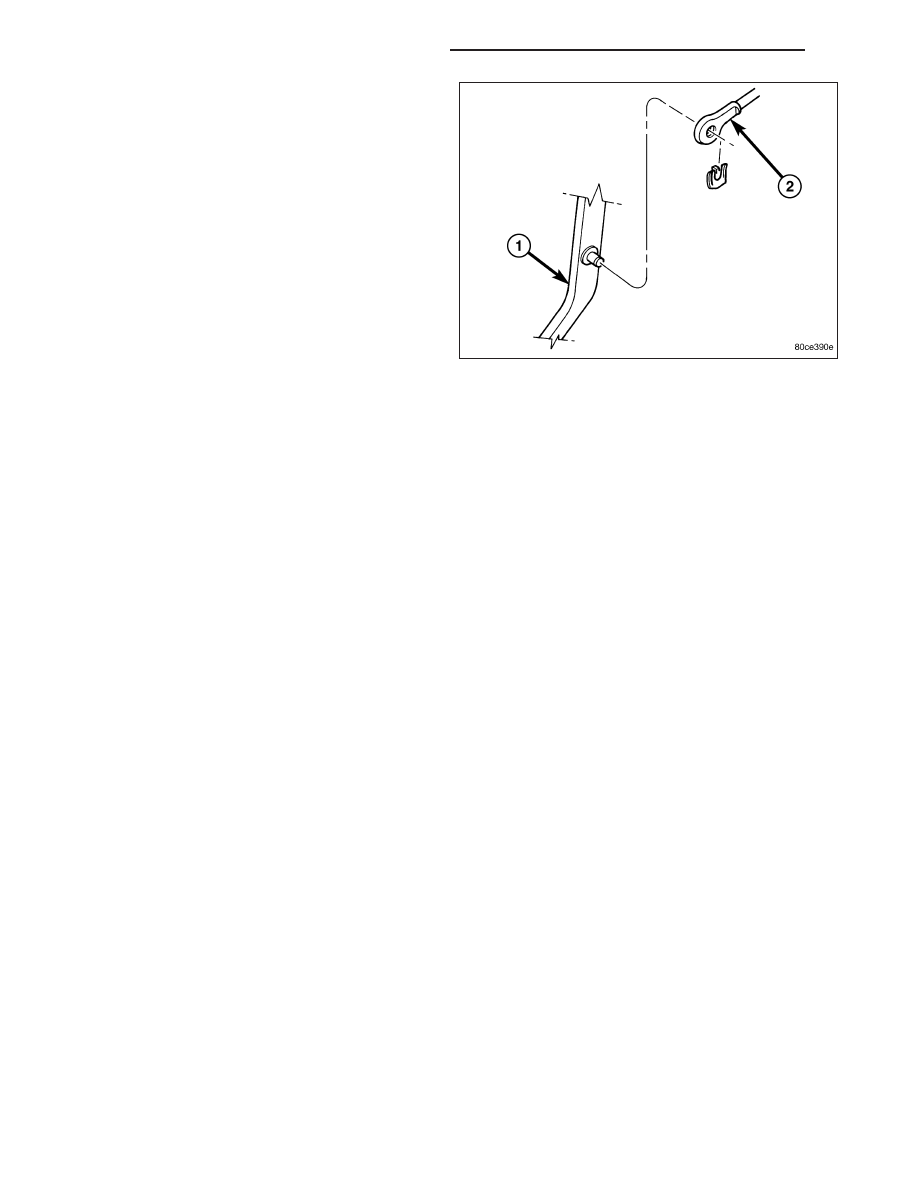Jeep Liberty KJ. Manual - part 569

3. Slide booster push rod (2) onto the brake pedal (1).
Then secure push rod (2) to pedal pin with retain-
ing clip.
NOTE: Lubricate the pedal pin with Mopar multi-
mileage grease before installation.
4. Tighten booster mounting nuts to 39 N·m (29 ft.
lbs.).
5. Install a new brake lamp switch and reconnect the
electrical connector.
6. Install the knee blocker, (Refer to 23 - BODY/INSTRUMENT PANEL/KNEE BLOCKER - INSTALLATION).
7. If original master cylinder is being installed, check condition of seal at rear of master cylinder. Replace seal if cut,
or torn.
8. Clean cylinder mounting surface of brake booster. Use shop towel wetted with brake cleaner for this purpose.
Dirt, grease, or similar materials will prevent proper cylinder seating and could result in vacuum leak.
9. Align and install master cylinder on the booster studs. Install mounting nuts and tighten to 17.5 N·m (155 in. lbs.).
10. Connect vacuum hose to booster check valve.
11. Remount the cruise control servo to the original location. Tighten bracket mounting nuts to 17.5 N·m (155 in.
lbs.).
12. Connect and secure the brake lines to HCU and master cylinder. Start all brake line fittings by hand to avoid
cross threading.
13. Connect the wire to fluid reservoir.
14. Install the air box.
15. Fill and bleed base brake system, (Refer to 5 - BRAKES - STANDARD PROCEDURE).
16. Verify proper brake operation before moving vehicle.
5 - 36
BRAKES - BASE - SERVICE INFORMATION
KJ